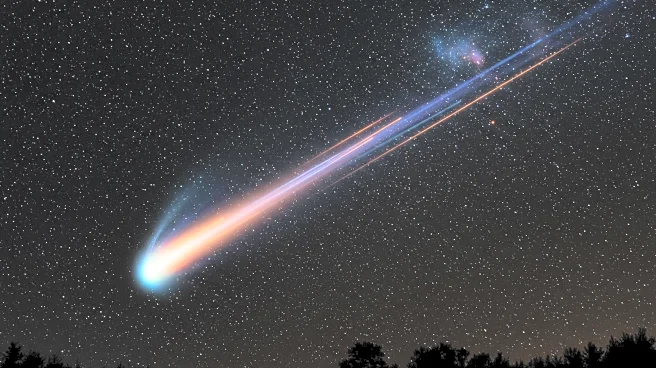What's Happening?
Researchers have discovered that the water in comet 12P/Pons-Brooks, known as the 'Devil Comet,' is strikingly similar to Earth's water. This finding supports the theory that comets may have delivered water to Earth, aiding in the development of life. The study, led by NASA molecular astrophysicist Martin Cordiner, used data from the Atacama Large Millimeter/submillimeter Array (ALMA) and NASA's Infrared Telescope Facility (IRTF) to analyze the deuterium to hydrogen (D/H) ratio in the comet's water, which matched Earth's isotopic signature.
Why It's Important?
The discovery strengthens the theory that comets could have played a crucial role in making Earth habitable by delivering water with the same isotopic signature as found on Earth. This challenges previous findings that showed different D/H ratios in Halley-type comets, casting doubt on their role in Earth's water delivery. Understanding the origins of Earth's water is vital for comprehending the conditions that led to the evolution of life on our planet.
What's Next?
The ALMA observations mark the first time a comet's water has been mapped in such detail, providing insights into the comet's composition. Future studies may focus on mapping water in other comets to further explore the role of cometary impacts in Earth's history. This research could lead to a better understanding of the chemical processes that contributed to Earth's habitability.











